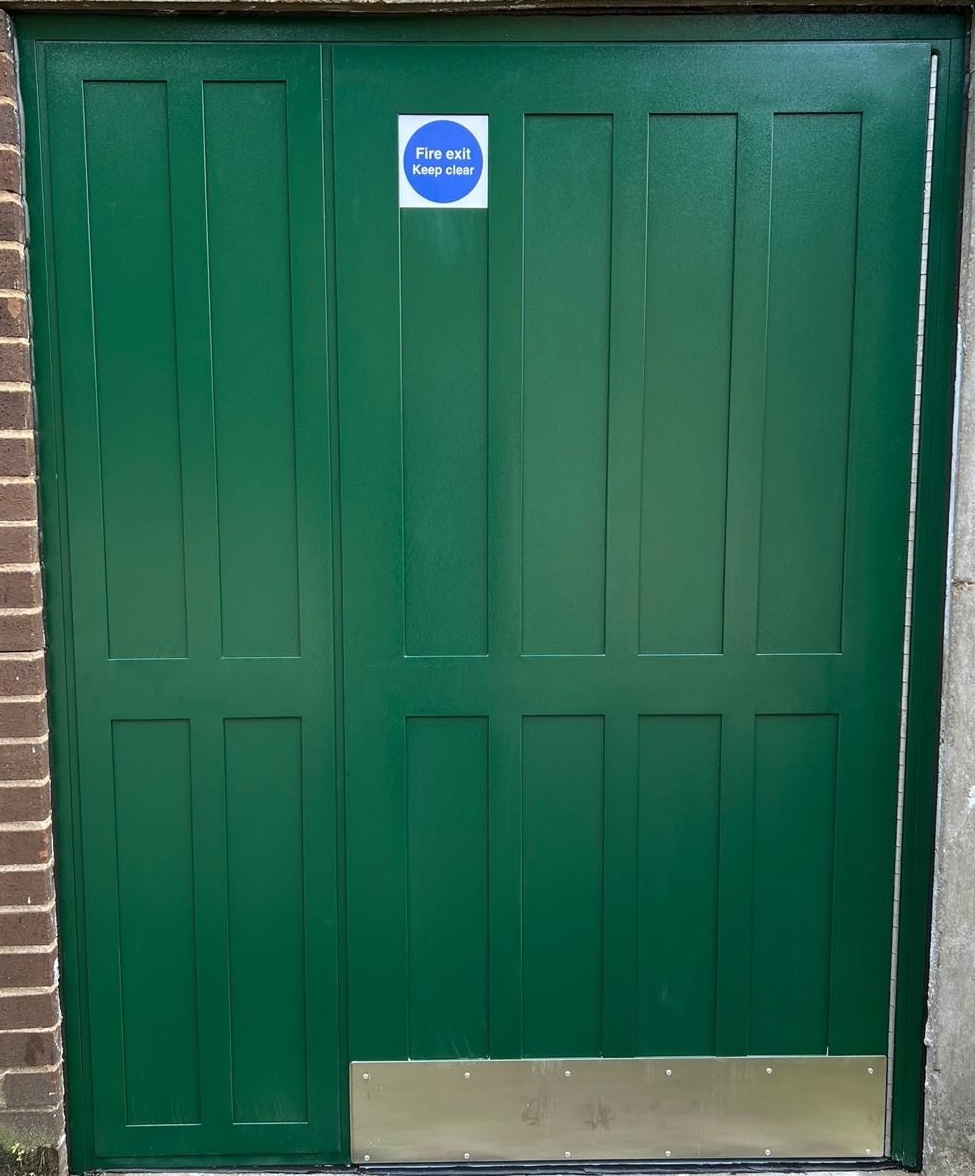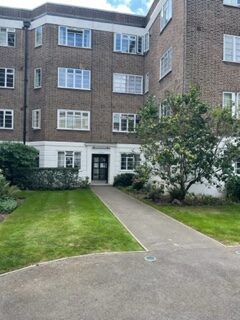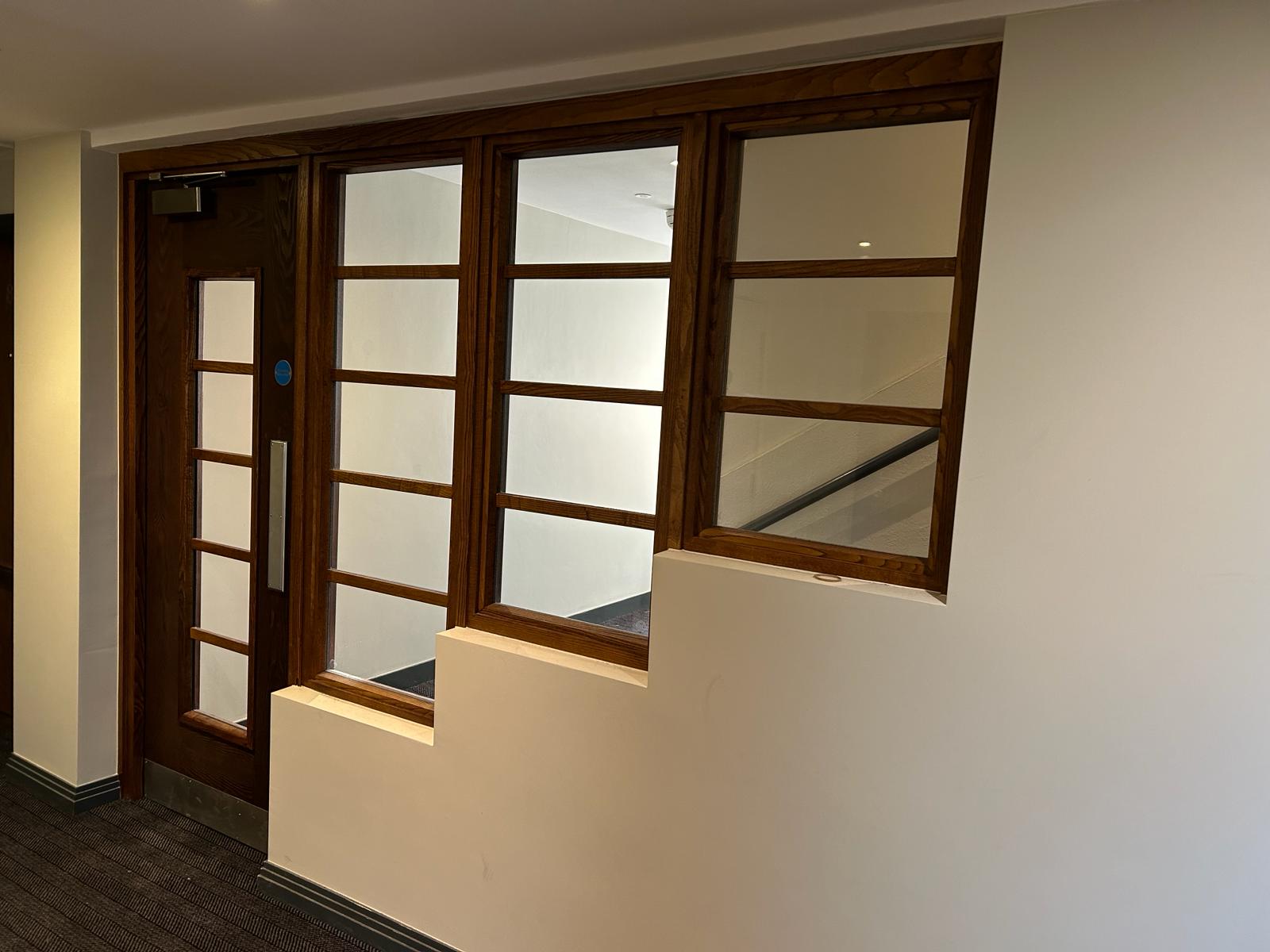Fire doors are available in a huge range of styles and designs. They can incorporate glazing, an array of veneers and ironmongery to suit the aesthetic of any project, but the one thing they all have in common is that they’ve been rigorously tested to ensure they meet specific requirements.
The testing methods used on fire doors and doorsets are defined in BS 476 Part 22: methods for determination of the fire resistance of non-loading bearing elements of construction (or BS EN 1634 Part 1, the European equivalent).
With the support of Jon Gorf, Technical Consultant at BWF Certifire, this post gives an insight into the testing methods used on fire doors and doorsets.
Testing the whole door assembly
Testing should be done through an independent body – and it must be carried out on an entire door assembly, rather than individual components. This is because the testing procedure is meant to ascertain how an actual door installation performs under fire conditions – not just a single door element.
So, a door leaf must be tested along with the elements it will be installed with – such as the door frame, any glazing, the ironmongery and smoke seals.
Even small differences in details can significantly affect the performance of a door, and the result of changing the specification or not fitting the correct components could be catastrophic.
Therefore, if a door is installed with elements different from what it was tested with, no guarantee can be given about its performance under fire conditions.
Test procedure
The entire doorset is fixed in a wall similar to the one installed on-site. Then, one face of the door will be exposed to the heat conditions that would be expected in a fire situation.
During the tests, the upper part of the door should be under a small positive pressure; this simulates the conditions likely to occur in a fire.
The door should be tested from both sides to establish its performance when either face is exposed to fire conditions. This means that two specimens will be required for testing.
Throughout the testing, the door will be observed for stability and integrity. As part of this, a combustible fibrous pad will be placed on the unexposed side of the door to see when it ignites.
Fire door ratings
Once the testing is complete, the doors receive a rating based on how long they can be expected to resist fire. These are:
● FD30 – 30 minutes
● FD60 – 60 minutes
● FD90 – 90 minutes
● FD120 120 minutes
Third-party certification
While third-party certification is not required, it is highly recommended as it verifies a fire door’s design, performance, manufacturing process and quality assurance, from manufacture to installation.
As part of the third-party certification processes, the manufacturer is also audited to ensure that suitable processes and systems are in place to ensure a consistent product.
For example, Exova BM Trada’s Q-Mark fire door manufacture scheme was established to provide independent reassurance to specifiers and purchasers that products meet the building regulations and are manufactured to a consistent quality. BWF-Certifire is another similar scheme.
Doors certified through either of these schemes will be marked with the certification mark, and specifiers can refer back to the relevant scheme to find out more information about the door manufacturer and the test results.
To find out more about the fire doors available from Soundcraft, please see our product pages.
Please note that a comprehensive explanation of the testing requirements and methods are beyond the scope of this blog post, so we recommend referring to the relevant BSI documents if you need more information.
Sources
http://www.bwfcertifire.org.uk/knowledge-centre/fire-doors
http://www.firesafe.org.uk/fire-doors/
https://www.doorweb.co.uk/downloads/1415708052BS476-22.pdf
‘With the support of the British Woodworking Federation, this post helps to provide you with information on how to identify compliant fire doors and doorsets.’




